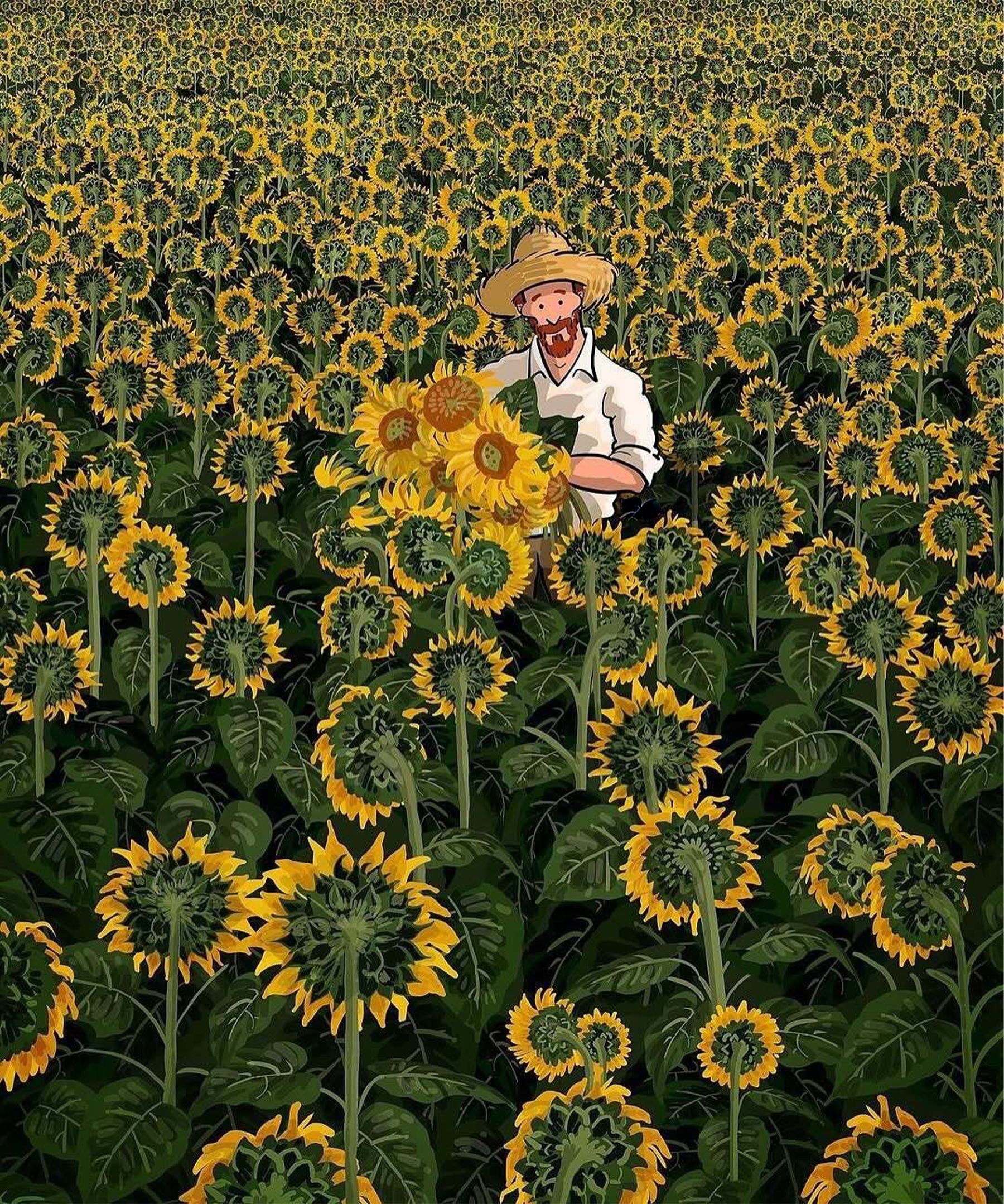Your cart is currently empty!

“Every artist was first an amateur.” — Ralph Waldo Emerson
Whether you’re a seasoned painter or a complete beginner, the world of oil painting offers endless opportunities for creativity and self-expression. As Emerson wisely said, every artist starts as an amateur—ready to discover the world through their brushes. In this blog post, we’ll explore the captivating charm of oil painting while also providing essential tips on composition, color, and structure for beginners.
🖌️ The Timeless Allure of Oil Painting
“Painting is just another way of keeping a diary.” — Pablo Picasso
Oil painting has captivated artists and audiences for centuries, from the Renaissance masterpieces to modern abstract works. Picasso’s quote reminds us that art, especially oil painting, is an intimate and personal form of storytelling. Each brushstroke is a mark of time, emotion, and memory, captured on canvas for others to experience.
Oil paints are renowned for their rich texture, depth of color, and long-lasting vibrancy. Unlike other mediums, oil painting offers an extended working time, allowing artists to blend, layer, and refine their work with greater flexibility. Whether you’re painting a realistic landscape or an abstract composition, oil paints provide the tools to create stunning works that resonate deeply with the viewer.
🎨 Oil Painting Basics for Beginners: Composition, Color, and Structure
As you embark on your journey with oil painting, it’s essential to understand a few foundational principles that will help guide your artistic process. These include composition, color theory, and structure.
🖼️ 1. Composition in Oil Painting
“The composition of a painting is the arrangement of its elements, creating harmony and balance.” — Unknown
Composition is one of the most important elements of painting. It refers to how the various parts of the painting are arranged to create a sense of harmony and visual appeal. Beginners should consider the following composition tips:
- The Rule of Thirds: Divide the canvas into a 3×3 grid, placing key elements along these lines or at their intersections. This technique creates dynamic balance and guides the viewer’s eye.
- Focal Point: Every painting needs a focal point—a main subject or area of interest. Ensure your composition leads the viewer’s gaze to this focal area.
- Balance: Even in abstract art, balance is crucial. Use elements like color, light, and shapes to balance both sides of your canvas and avoid a lopsided look.
🎨 2. Understanding Color in Oil Painting
“Color is the keyboard, the eyes are the harmonies, the soul is the piano with many strings.” — Wassily Kandinsky
Color is the language of emotion in oil painting. Different colors evoke different feelings, and understanding how to mix and match hues can greatly enhance the emotional impact of your work. Beginners should focus on the following color principles:
- Primary Colors: Red, blue, and yellow are the foundation of all other colors. These are the basic colors you’ll use to create secondary and tertiary colors.
- Color Mixing: By mixing primary colors together, you can create a wide variety of secondary colors (like purple, orange, and green) and nuanced shades.
- Complementary Colors: These are colors that sit opposite each other on the color wheel, like blue and orange. Using them together creates contrast and vibrancy in your painting.
🖋️ 3. Structure and Layering in Oil Painting
“The more I paint, the more I am convinced that painting is the key to all the art forms.” — Claude Monet
The structure of an oil painting is built up through layers. The unique oil medium allows for slow drying times, which is an advantage for layering. Follow these steps for successful oil painting structure:
- Underpainting: Start with a monochromatic underpainting using a neutral color like burnt umber to sketch your composition. This helps create depth and structure in your painting.
- Fat over Lean: This classic rule ensures your painting dries evenly. Start with a lean, thinner layer and gradually apply thicker, oil-rich layers.
- Glazing: After your painting is dry, you can apply thin transparent layers of paint called glazes to create luminosity and depth in your artwork.
🌟 Why You Should Start Painting with Oils
“Art is the most beautiful of all lies.” — Claude Debussy
Oil painting is not just about creating a picture—it’s about expressing feelings, telling stories, and evoking emotions that words cannot describe. It is about creating a world on canvas that allows both the artist and the viewer to lose themselves in beauty.
For beginners, oil painting offers a unique opportunity to explore and develop personal techniques, learning both from mistakes and successes. Whether you’re creating portraits, landscapes, or abstract works, the world of oil painting is waiting to reveal its secrets to you.